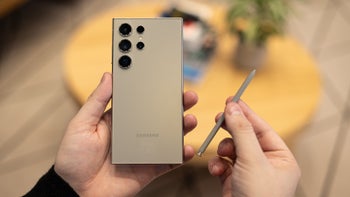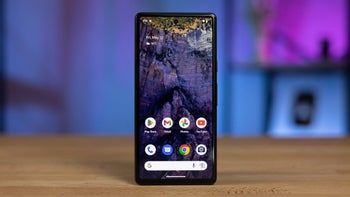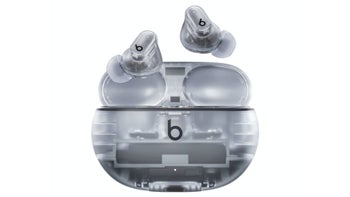Samsung Galaxy S II vs LG Optimus 2X outdoor camera samples

Both the Samsung Galaxy S II and the LG Optimus 2X have 8MP autofocus cameras with a single flash of the LED technology, so the dual-core handsets are ripe for comparison.
Bear in mind that we are playing around with a pre-production unit of the Samsung Galaxy S II in the office, but the software build seems quite finalized, and the new camera interfaces is pretty with its transparent backgrounds that allow you to see the frame behind the settings list. As far as functionality goes, the camera interface stays mostly the same, just wrapped up differently. Here are some sample outdoor photos taken on a cloudy day with the two powerful Android handsets:
As you can see, both cameras capture pretty much similar amounts of detail, and it's a very good amount for a cell phone camera. The photos taken with the Samsung Galaxy S II, however, turn out a tad sharper than those from the Optimus 2X. Moreover, LG's handset tends to produce slightly undersaturated photos, with colder colors than they actually are. The images from the Samsung Galaxy S II, on the other side, have a higher contrast and thus are more pleasing at first look. Furthermore, we noticed that Samsung's 8MP shooter has about 10-15% wider field of view than the lens in the LG Optimus 2X - it fits more scene into the frame from one and the same position.
Thus we can give our personal preferences to the still photos from the Samsung Galaxy S II, but we guess that's not what you are reading this piece for. Of real interest with those two dual-core chipsets - the NVIDIA Tegra 2 in the LG Optimus 2X, and the Exynos in the Samsung Galaxy S II - is that they can process video recording in Full HD 1080p resolution, so we caught a sample video with both:
The LG Optimus 2X captures 1080p video with 24fps by default, which is on the borderline of fluidity, whereas the factory specs of the Samsung Galaxy S II peg it at 30fps in Full HD recording mode. This time the average framerate in our sample take with LG's handset went higher than 24fps, but even then the video taken with our preproduction Galaxy S II unit appeared smoother. Just make sure you choose the 1080p option of YouTube, and switch to full screen for full appreciation:


Samsung's finest 1080p videos are recorded in the better .MP4 container, rather than .3GP in the case of LG, plus they have a higher bitrate - 17Mbps vs 10Mbps for the Optimus 2X, although in the process the Galaxy S II Full HD video files turn out a third larger than those recorded with LG's handset for the same duration.
When you add the extra contrast and sharpness, we can declare the Samsung Galaxy S II a winner in the dual-core camera department, both in still photos, and Full HD video recording. The only thing that's missing from that picture is the newly announced HTC Sensation with its own 8MP camera sensor and two CPU cores, but we should be able to stage a catfight between the three relatively soon.
Bear in mind that we are playing around with a pre-production unit of the Samsung Galaxy S II in the office, but the software build seems quite finalized, and the new camera interfaces is pretty with its transparent backgrounds that allow you to see the frame behind the settings list. As far as functionality goes, the camera interface stays mostly the same, just wrapped up differently. Here are some sample outdoor photos taken on a cloudy day with the two powerful Android handsets:
As you can see, both cameras capture pretty much similar amounts of detail, and it's a very good amount for a cell phone camera. The photos taken with the Samsung Galaxy S II, however, turn out a tad sharper than those from the Optimus 2X. Moreover, LG's handset tends to produce slightly undersaturated photos, with colder colors than they actually are. The images from the Samsung Galaxy S II, on the other side, have a higher contrast and thus are more pleasing at first look. Furthermore, we noticed that Samsung's 8MP shooter has about 10-15% wider field of view than the lens in the LG Optimus 2X - it fits more scene into the frame from one and the same position.
Thus we can give our personal preferences to the still photos from the Samsung Galaxy S II, but we guess that's not what you are reading this piece for. Of real interest with those two dual-core chipsets - the NVIDIA Tegra 2 in the LG Optimus 2X, and the Exynos in the Samsung Galaxy S II - is that they can process video recording in Full HD 1080p resolution, so we caught a sample video with both:


Samsung's finest 1080p videos are recorded in the better .MP4 container, rather than .3GP in the case of LG, plus they have a higher bitrate - 17Mbps vs 10Mbps for the Optimus 2X, although in the process the Galaxy S II Full HD video files turn out a third larger than those recorded with LG's handset for the same duration.










Things that are NOT allowed: